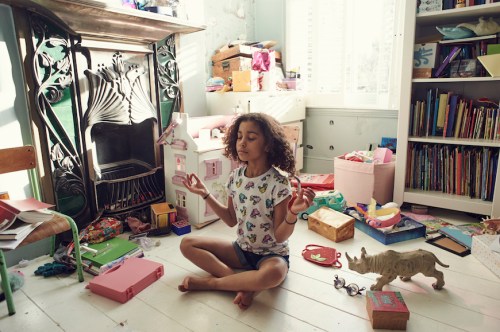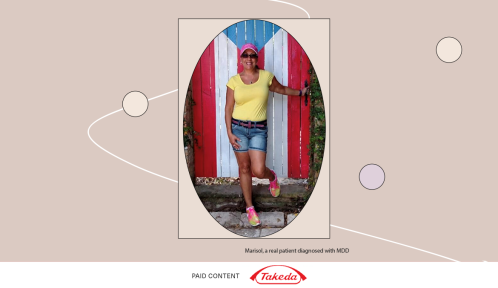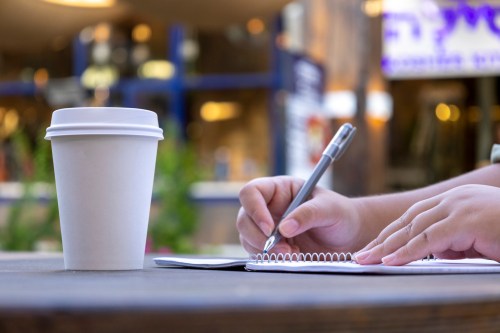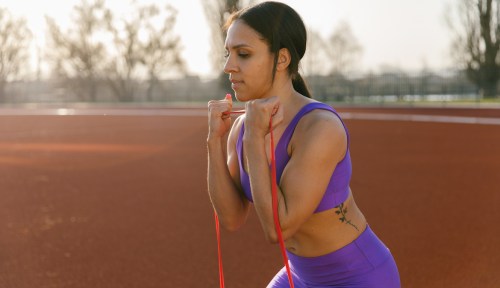Our editors independently select these products. Making a purchase through our links may earn Well+Good a commission
It’s early evening and as the day winds down, your wellness routine kicks into high gear, letting the stress of the day melt away. You cuddle on the couch with your weighted blanket, turning on something light to watch on TV—nothing scary. Then, you toggle over to YouTube to do a short meditation, led by your favorite influencer. Bedtime rolls around—definitely your most dreaded part of the day. To help, you fire up your trusty sleep app, which finally lulls you softly to sleep.
Sound like an evening your favorite wellness influencer would post on IG? It’s actually one that could easily be made a reality for children. Many of the mindfulness tools that have been staples of the wellness movement are now getting a kid-friendly makeover. Headspace recently announced a new partnership with Sesame Street to create six mindful meditations led by Cookie Monster, Elmo, Grover, and the gang. Earlier this year, Mattel released a Barbie Wellness Collection, a line of seven dolls practicing self care, with one that leads guided meditations. (Barbie also leads breathing exercises on YouTube, where she has 11 million subscribers.) Then there’s children’s sleep and mindfulness app Moshi (created by Calm founder and CEO Michael Acton Smith), which just received a whopping $12 million in funding. And in May, eco-friendly weighted blanket company Bearaby debuted the Nappling ($149), a weighted blanket specifically for children.
Clearly mindfulness for kids has moved way beyond just yoga in the classrooms. But are these new products actually helping children, or are they just a cash grab?
Rising rates of anxiety in kids
While life before jobs, bills, and long days with no nap sound wistful, statistics show that many children suffer from stress and anxiety. A 2019 study published in the Journal of Developmental Behavioral Pediatrics found a 20-percent increase in anxiety diagnoses between 2007 and 2012 for children ages 6 to 17. Yet according to the Anxiety and Depression Association of America, 80 percent of kids with a diagnosable anxiety disorder aren’t getting treatment.
“Just like with adults, there’s a wide range of reasons why kids can feel anxious,” says child psychologist Abigail Gewirtz, PhD, the author of the new (very timely) book, When the World Feels Like A Scary Place. “Some children are more prone to anxiety because it’s genetic, while for others it’s more situational.” Traumatic experiences, like a parent’s death or divorce, can trigger anxiety disorders in some kids. Dr. Gewirtz says many children also feel pressured to succeed from an early age. “When activities that were once done for fun turn into something that feel the need to succeed in, that can lead to feeling anxious,” she says, like pressuring kids to pursue a sport or other activity for the hopes of getting a college scholarship or pro recognition in the future.
Then you throw in a pandemic. While it’s too soon to tell statistically just how much COVID-19 is raising anxiety levels in kids, a recently published study in the journal Pediatrics says school closures, economic hardship affecting families, and the public health crisis itself are all likely to affect kids’ mental health. Dr. Gewirtz says the very real health threat of COVID-19 is felt by children just as it is adults. On top of that, the lack of social interaction and routine disruption don’t help. “The pandemic is very stressful—to everyone,” she says.
With the number of children with anxiety growing even before COVID-19, the pandemic seems like the tipping point for finding tools that kids can actually use to better their mental health.
Giving mindfulness a kid-friendly makeover
“Even before the pandemic, we started thinking about ways we could help kids manage stress,” says Monica Dreger, Mattel’s head of global consumer insights. “Our team talks to parents and children all the time, and kids would often talk about the stress they feel. A lot of kids feel over-scheduled or an intense pressure to succeed. These are problems we can’t really solve, but we thought we could be part of the solution in terms of alleviating some of that stress and anxiety.” Mattel then teamed up with Headspace to develop Breathe With Me Barbie ($34.99), which leads kids through five short breathing exercises at the press of a button.
Of course, many kids have trouble sitting still through anything, let alone a meditation exercise, so developing the doll took careful thought to ensure it is impactful. Dreger stresses it’s still primarily a toy; just like any other Barbie, it’s meant to be played with. She also says they decided to include little emoji accessories, representing different emotions kids may be feeling. “We talk to kids every day and there’s a variety of emotions that are confusing to them,” Dreger says. “The emojis provide a way for them to better process their emotions.” Dr. Gewirtz agrees that play is, in fact, how kids process their emotions. “Play is really important. Kids play out all the stuff that’s going on in their lives and often use it to process what’s happening in the world around them.”
Mattel extended the mindfulness messaging to YouTube on Barbie’s vlog, which Dreger says is the place where Barbie communicates directly with her fans. “[A recent video] specifically addresses COVID-19 and the many emotions kids are experiencing right now, like feeling super happy one moment but then sad or scared the next, and how that’s okay,” Dreger says. “It acknowledges these feelings and then gives them little activities to do.”
Moshi ($39/year) also incorporates mindfulness for kids through tech. While it launched as a sleep app for kids—and is predominately used that way—CEO Ian Chambers says that after hearing from parents that they were using the app in other parts of the day, they launched Moments of Calm, which pairs short breathing exercises (voiced by Goldie Hawn) with light messages behind them, like gratitude and happiness. These breathing exercises are tailored specifically for emotional moments kids themselves might struggle with, like time-outs.
Chambers says that Moshi’s team works closely with sleep experts and scientists to create the app’s programming. The bedtime stories are custom created and feature a mix of narration, singing, and white noise. The stories are structured in a way that starts by engaging the child, but then slowly relaxing them and lulling them to sleep. “One bedtime story about a train has an underlying sound of a train on the track. It’s a soft noise and it’s actually the same speed as a child’s resting heartbeat,” Chambers says.
Then there’s the weighted blanket, a cult-favorite anxiety-reducer among adults in the wellness world. Bearaby created an eight pound version for four to 14 year olds (a standard weighted blanket is usually at least 15 pounds). Founder Kathrin Hamm says the company planned to launch its kids’ line in the fall. The brand moved the rollout to May after parents reached out saying that this product needed to be available sooner.
“The weighted blanket for kids can be used in a few different ways,” Hamm says. “One is obviously for sleep. Especially now with schedules being disrupted, kids are having an even harder time falling asleep. The weighted blanket can help them fall asleep faster and also get better quality sleep. The second way it can be used is at nap time. And the third is in times of anxiety for 10 or 20 minutes just to calm down.” To this end, according to scientific studies, a weighted blanket can help reduce the body’s production of the stress hormone cortisol—at least in adults.
Is wellness for kids a gimmick?
Of course good sleep is important for kids’ well-being—anyone’s well-being—but in terms of reducing anxiety, are these bells and whistles really necessary for making kids feel like kids? Dr. Gewirtz says that, in her opinion at least, tools like the ones highlighted here can be helpful, but there’s something else that she says is even more important: the development of strong relationships.
“I think things like breathing exercises and learning how to manage your emotions is great, but interaction is even more important,” she says. “Instead of sticking your kid under a weighted blanket and handing them a screen with a breathing video, it’s most beneficial to actually use these things together.”
She also reiterates the importance of play, not only as a way for kids to process the world around them, but also to use their imaginations in new, creative ways. But in general, she’s all for anxiety-reducing kids’ tools like the ones highlighted here. “If a kid is going to play with a Barbie, what’s wrong with them playing with a meditation Barbie?” she says.
Certainly there’s no better time than helping kids’ manage their anxiety than during a pandemic. Creating a wellness routine before middle school? It’s child’s play.
Sign Up for Our Daily Newsletter
Get all the latest in wellness, trends, food, fitness, beauty, and more delivered right to your inbox.
Got it, you've been added to our email list.











